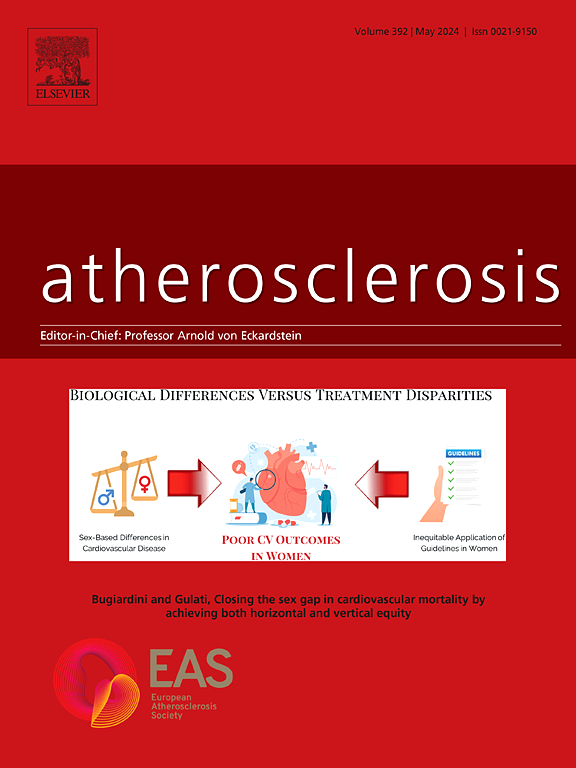Plasma polyamines levels and post-stroke depression in ischemic stroke patients: A multicenter prospective study
IF 4.9
2区 医学
Q1 CARDIAC & CARDIOVASCULAR SYSTEMS
引用次数: 0
Abstract
Background and aims
Polyamines have been suggested to implicated in inflammation, ischemic stroke, and mental disorders, but the associations of polyamines with post-stroke depression (PSD) remain unclear. We aimed to prospectively investigate the associations of plasma putrescine, spermidine and spermine with PSD among ischemic stroke patients in a multicenter cohort study.
Methods
We measured plasma putrescine, spermidine and spermine levels at baseline among 635 ischemic stroke patients from a preplanned ancillary study of the CATIS (China Antihypertensive Trial in Acute Ischemic Stroke). The study outcome was depression (Hamilton Depression Rating Scale score ≥8) at 3-month follow-up after ischemic stroke.
Results
Plasma putrescine and spermidine were positively associated with the risk of PSD. The adjusted odds ratios of PSD for the highest versus lowest tertile of putrescine and spermidine were 1.77 (95 % CI, 1.13–2.78; ptrend = 0.014) and 1.77 (95 % CI, 1.11–2.82; ptrend = 0.013), respectively. Multivariable-adjusted spline regression analyses showed linear associations of plasma putrescine (p = 0.002 for linearity) and spermidine (p = 0.008 for linearity) with PSD. In addition, plasma putrescine (continuous net reclassification improvement [NRI]: 26.33 %, p = 0.002; integrated discrimination improvement [IDI]: 1.06 %, p = 0.009) and spermidine (continuous NRI: 20.72 %, p = 0.013; IDI: 1.04 %, p = 0.010) could significantly improve the risk reclassification of PSD beyond the established risk factors.
Conclusions
High plasma putrescine and spermidine levels were associated with increased risk of PSD among ischemic stroke patients. Our findings suggest that plasma polyamines should be implicated in the pathophysiologic processes of PSD and may be the potential intervention targets for PSD.

求助全文
约1分钟内获得全文
求助全文
来源期刊

Atherosclerosis
医学-外周血管病
CiteScore
9.80
自引率
3.80%
发文量
1269
审稿时长
36 days
期刊介绍:
Atherosclerosis has an open access mirror journal Atherosclerosis: X, sharing the same aims and scope, editorial team, submission system and rigorous peer review.
Atherosclerosis brings together, from all sources, papers concerned with investigation on atherosclerosis, its risk factors and clinical manifestations. Atherosclerosis covers basic and translational, clinical and population research approaches to arterial and vascular biology and disease, as well as their risk factors including: disturbances of lipid and lipoprotein metabolism, diabetes and hypertension, thrombosis, and inflammation. The Editors are interested in original or review papers dealing with the pathogenesis, environmental, genetic and epigenetic basis, diagnosis or treatment of atherosclerosis and related diseases as well as their risk factors.
 求助内容:
求助内容: 应助结果提醒方式:
应助结果提醒方式:


